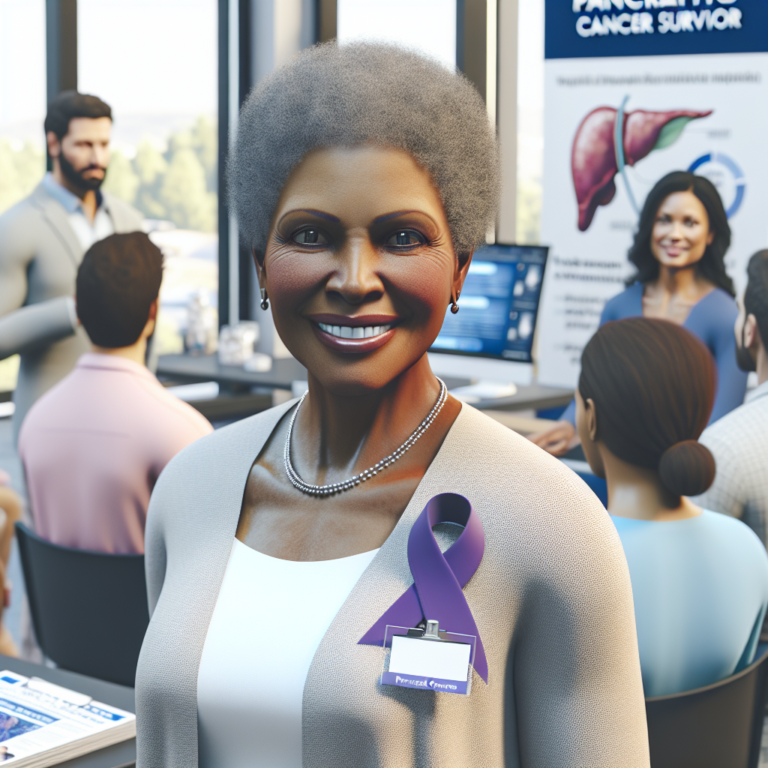Stay Alert: How Vigilance Can Lead to Early Pancreatic Cancer Diagnosis

In a poignant journey that began on November 3, 2010, Michael Whalen, an ophthalmologist, faced a life-altering diagnosis while celebrating his 70th birthday in South Carolina. After experiencing night sweats, he returned home to discover a troubling escalation in his health. Despite the initial belief that he merely had a routine infection, further investigation revealed something much more serious lurking within his body.
The Diagnosis That Changed Everything
Upon returning from vacation, Michael’s internist noticed an elevated white blood cell count, hinting at a potential infection. After ruling out common culprits, including urinary and kidney infections, Michael’s suspicions led him to consider tuberculosis due to a past incident during his medical training. However, tests returned negative.
While consulting with a patient distressed by her sister’s recent battle with pancreatic cancer, Michael felt compelled to request a CT scan of his pancreas. Initially met with skepticism from his internist, the scan ultimately revealed a 6-centimeter tumor on the distal pancreas, along with possible metastatic lesions in the liver. This shocking discovery dramatically shifted the course of his life.
Confirming the Cancer Diagnosis
Following the CT results, Michael quickly sought the expertise of a surgeon and a gastrointestinal specialist, who performed a pancreatic biopsy. Initially optimistic, the specialist reassured Michael that it was likely a cyst. However, by nightfall, the grim diagnosis was confirmed: Michael had the worst variant of adenocarcinoma.
The surgeon prepared Michael’s family for the worst, suggesting that he might only have three months to live and that even with chemotherapy, he could suffer for six months. Faced with this heartbreaking prognosis, Michael and his family sought a second opinion.
Seeking Effective Treatment
At Memorial Sloan Kettering Cancer Center in New York, Michael received similar bleak news. However, a retired oncologist in Albany was recommended, and he offered a glimmer of hope: a chemotherapy regimen. Michael began a rigorous three-day treatment cycle that included oxaliplatin, irinotecan, and leucovorin, followed by a continuous drip of fluorouracil.
After two weeks, Michael faced a life-threatening drop in his white blood cell count, leading to a hospitalization where he was isolated due to the risk of infection. Despite enduring severe side effects and losing 30 pounds, his determination remained strong. He and his wife found solace in cooking shows, which helped stimulate his appetite for anti-cancer foods.
During a routine oncologist visit, Michael was pleasantly surprised to learn that the tumor had shrunk to 2 centimeters. This improvement led to discussions about the possibility of surgery, and he was referred to Dr. Yuman Fong, a renowned surgeon.
The Life-Changing Surgery
With a hopeful outlook, Michael opted for surgery. Upon waking from the procedure, he was met with the joyful news that the tumor had been successfully removed. Following recovery, he transitioned to a milder chemotherapy regimen of gemcitabine, allowing him to regain his strength and health.
Embracing Life After Treatment
Years of follow-up scans led Michael to advocate for a change in protocol. In 2017, he proposed to his oncologist that they reduce the frequency of radiation scans, opting instead for semi-annual tumor marker blood tests. Now, with the unwavering support of his family and friends, Michael celebrates life, having recently marked his 58th wedding anniversary. Grateful for his journey and ongoing health, he reflects on how fortunate he feels.
For further inspiration from Michael’s journey, check out his story in the video series "Listen to the Patient."






